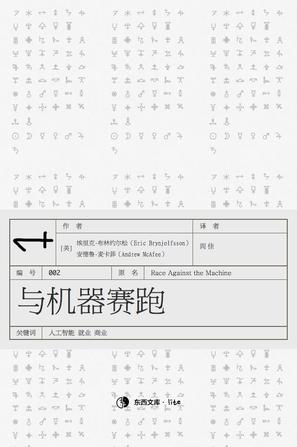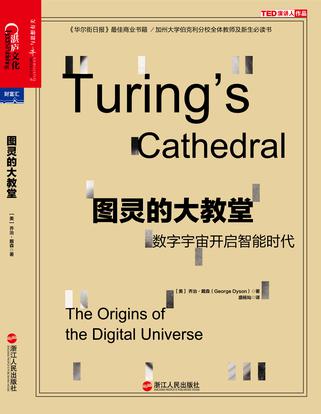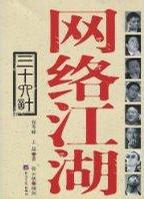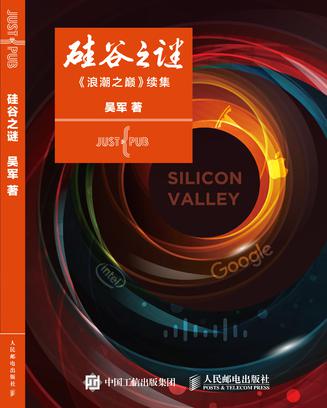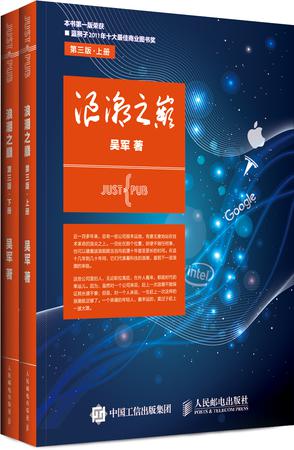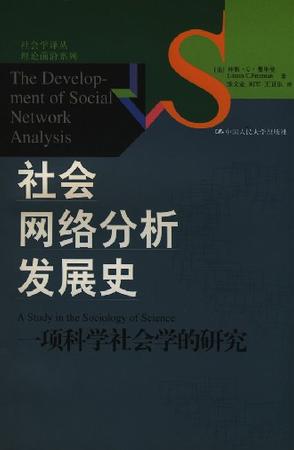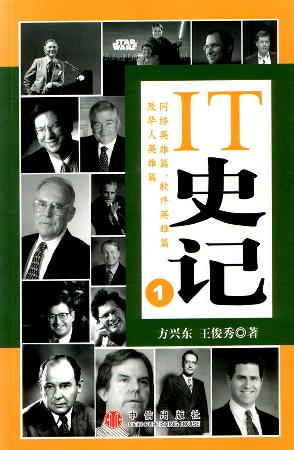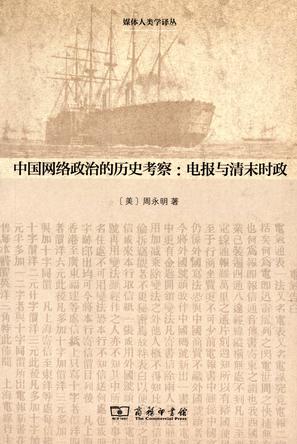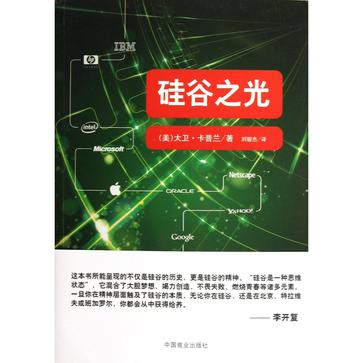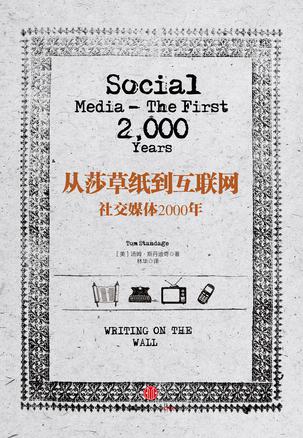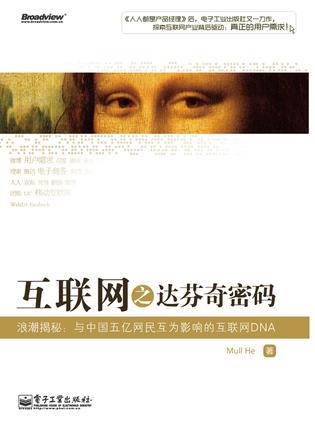欢迎来到相识电子书!
标签:互联网
-
与机器赛跑
一场数字革命正在加速进行。 一些科幻小说里的场景已经在现实中发生:无人驾驶汽车开上了公路;智能设备能高效地翻译人类语言;人工智能系统在智力竞赛里击败了所有人类选手;工厂雇主开始购买更多的新机器,却不招新工人…… 这些例子都证明,数字技术正在快速地掌握原本只属于人类的技能,并深刻地影响了经济。虽然大多数影响是积极的:数字革新将提高效率、降低商品价格(甚至到免费),以及增加经济总量。 但数字革新也改变了经济总量分配的方式。对处于中层的工作者来说,情况并不乐观。随着技术继续领跑,更多的人将被甩开。工人的技能被计算机掌握后,他们获得的工作机会将更少。他们的薪酬和前景也将进一步缩减和暗淡。创业式的商业模型,新式的组织结构和其他机构都需要保证员工的平均水平不能落后于迅速发展的机器。 在《与机器赛跑》里,布林约尔松和麦卡菲汇集了一系列数据、案例和论证,证明了技术进步正在加速进行,而这种趋势对技能、薪酬和就业机会都有深层影响。本书将告诉你,造成糟糕的就业现状的原因并不是技术的停滞,而是人类和我们的机构无法赶上机器的脚步。 -
图灵的大教堂
1936年,时年24岁的图灵宣称:“发明一台可用于计算任意可计算序列的单一机器是有可能的。”在《图灵的大教堂》一书中,作者乔治•戴森着重介绍了一小群人,为首的是供职于新泽西州普林斯顿高等研究院的约翰•冯•诺依曼,他参与建造了最早的一台计算机,以实现艾伦•图 灵提出的通用机的愿景。他们的工作打破了用于表意的数字和用于运算的数字之间的区别,世界因此而改变。 科学家们使用5千字节的内存(相当于现代计算机桌面上显示的光标所分配的内存大小),在天气预测和核武器设计方面,都获得了前所未有的成功。同时,他们还利用空闲时间解决各种问题——从病毒的进化到恒星的演变。 戴森教授的叙述既具有历史意义,又富于预见性,为第二次世界大战后期数字宇宙的爆炸提供了新的且重要的信息。代码和计算机的兴起伴随着两大历史性的发展:生物学自我复制序列的破译和氢弹的发明。最具破坏性和最具建设性的人类发明同时出现并不是巧合。 -
烧.com
这是第一本关于中国网络和全球风险资本碰撞的历史书,王志东、张朝阳、丁磊……一个个名字渐渐被雨打风吹去;风险资本、纳斯达克、中国网络股……一个个概念渐在人们视线中消失。它记录了新经济在中国的第一次登陆全过程,也记录了改革开放以来最大的经济泡沫的制造秘闻。 -
术士们熬夜的地方--互联网络传奇
25年前的今天,风靡全球的互联网络还存在于一小群“电脑术士”的头脑中。本书讲述了这些天才们是如何以他们创造性的、前所未有的工作,奠定了今日互联网络的基础。 -
网络江湖三十六计
《网络江湖三十六计》内容简介:貌合神离:卖个破绽给对手,让他尝到甜头,自认为可安枕无忧,往往就松懈大意。于是,自己蓄力并反击的机会就来了。诱敌就是“貌合”,暗地发力就是“神离”。 -
The Idea Factory
A sweeping, atmospheric history of Bell Labs that highlights its unparalleled role as an incubator of innovation and birthplace of the century's most influential technologies. Bell Laboratories, which thrived from the 1920s to the 1980s, was the most innovative and productive institution of the twentieth century. Long before America's brightest scientific minds began migrating west to Silicon Valley, they flocked to this sylvan campus in the New Jersey suburbs built and funded by AT&T. At its peak, Bell Labs employed nearly fifteen thousand people, twelve hundred of whom had PhDs. Thirteen would go on to win Nobel prizes. It was a citadel of science and scholarship as well as a hotbed of creative thinking. It was, in effect, a factory of ideas whose workings have remained largely hidden until now. "New York Times Magazine" writer Jon Gertner unveils the unique magic of Bell Labs through the eyes and actions of its scientists. These ingenious, often eccentric men would become revolutionaries, and sometimes legends, whether for inventing radio astronomy in their spare time (and on the company's dime), riding unicycles through the corridors, or pioneering the principles that propel today's technology. In these pages, we learn how radar came to be, and lasers, transistors, satellites, mobile phones, and much more. Even more important, Gertner reveals the forces that set off this explosion of creativity. Bell Labs combined the best aspects of the academic and corporate worlds, hiring the brightest and usually the youngest minds, creating a culture and even an architecture that forced employees in different fields to work together, in virtually complete intellectual freedom, with little pressure to create moneymaking innovations. In Gertner's portrait, we come to understand why both researchers and business leaders look to Bell Labs as a model and long to incorporate its magic into their own work. Written with a novelist's gift for pacing and an ability to convey the thrill of innovation, "The Idea Factory" yields a revelatory take on the business of invention. What are the principles of innovation? How do new technology and new ideas begin? Are some environments more favorable than others? How should they be structured, and how should they be governed? Can strokes of genius be accelerated, replicated, standardized? The history of Bell Labs provides crucial answers that can and should be applied today by anyone who wants to understand where good ideas come from. -
The Google Story
"Here is the story behind one of the most remarkable Internet successes of our time. Based on scrupulous research and extraordinary access to Google, the book takes you inside the creation and growth of a company whose name is a favorite brand and a standard verb recognized around the world. Its stock is worth more than General Motors’ and Ford’s combined, its staff eats for free in a dining room that used to be run by the Grateful Dead’s former chef, and its employees traverse the firm’s colorful Silicon Valley campus on scooters and inline skates. THE GOOGLE STORY is the definitive account of the populist media company powered by the world’s most advanced technology that in a few short years has revolutionized access to information about everything for everybody everywhere. In 1998, Moscow-born Sergey Brin and Midwest-born Larry Page dropped out of graduate school at Stanford University to, in their own words, “change the world” through a search engine that would organize every bit of information on the Web for free. While the company has done exactly that in more than one hundred languages, Google’s quest continues as it seeks to add millions of library books, television broadcasts, and more to its searchable database. Readers will learn about the amazing business acumen and computer wizardry that started the company on its astonishing course; the secret network of computers delivering lightning-fast search results; the unorthodox approach that has enabled it to challenge Microsoft’s dominance and shake up Wall Street. Even as it rides high, Google wrestles with difficult choices that will enable it to continue expanding while sustaining the guiding vision of its founders’ mantra: DO NO EVIL." -
硅谷之谜
这是一本颠覆人们对信息时代的认识、对创新和创业的理解的好书。作者吴军通过介绍硅谷成功的秘诀,揭示了信息时代的特点和方法论。 近年来,吴军从技术和管理人员变成了投资人,他对IT领域,尤其是对科技创新因而有了更深入的了解。他根据这些年在硅谷所获得的第一手资料,结合自己的思考,回答了长期以来令大家深感困惑的一个不解之谜,那就是—为什么硅谷在全世界其他地区难以复制? 《硅谷之谜》从某种意义上讲是《浪潮之巅》的续集或姊妹篇。在《硅谷之谜》中,吴军站在一个更高的层次,仔细分析了硅谷的起源和发展,对硅谷的创新力进行了深刻剖析,把硅谷的经验提升到了理论高度,并且解释了为什么只有硅谷真正做到了宽容叛逆、宽容失败、多元文化和拒绝平庸。这些特点造就了硅谷几十年的长盛不衰。 本书有助于中国的科技工作者、创业者、风险投资人以及政府相关部门的管理者深入研究、学习硅谷,也非常适合对科技创新与创业感兴趣的人士阅读参考。 -
浪潮之巅(第三版)(上下册)
一个企业的发展与崛起,绝非只是空有领导强人即可达成。任何的决策、同期的商业环境,都在都影响着企业的兴衰。《浪潮之巅》不只是一本历史书,除了讲述科技顶尖企业的发展规律,对于华尔街如何左右科技公司,以及金融风暴对科技产业的冲击,也多有着墨。此外,这本书也着力讲述很多尚在普及 或将要发生的,比如微博和云计算,以及对下一代互联网科技产业浪潮的判断和预测。因为在极度商业化的今天,科技的进步和商机是分不开的。 诚如作者所言:“人的商业知识和眼光不是天生的,需要不断地、有心地学习。经过多年的学习、思考和实践,我认定这样一个规律,就是:科技的发展不是均匀的,而是以浪潮的形式出现。每一个人都应该看清楚浪潮,赶上浪潮,如此,便不枉此生。” -
社会网络分析发展史
本书从科学社会学的角度,系统讲述了社会网络分析如何脱胎于不同的学科,经历了起伏的发展阶段,最后经过学科共同体的努力,会聚和融合成一个统一的。跨学科的、成为现代科学主流的研究领域。这是社会网络分析研究第一本最全面的学科发展史。 第一章 绪论 第二章 史前史:社会网络思想与实践的起源 第三章 社会网络分析的诞生(I):社会计量学 第四章 社会网络分析的诞生(II):哈佛大学的第一次推动 第五章 黑暗时代的社会网络分析(I):20世纪40年代 第六章 黑暗时代的社会网络分析(II):20世纪50年代 第七章 黑暗时期的社会网络分析(III):20世纪60年代 第八章 在哈佛的复兴 第九章 组织起来了 第十章 总结与发现 致谢 参考文献 索引 -
IT史记1
作者冷静地描绘IT世界的风起云涌,文以载道,这其中一以贯之的“道”究竟如何,是“数字化生存”,还是“只有偏执狂才能生存”,须知生存还是毁灭,这是摆在每个IT英雄面前的难题,他们深味摩尔定律的技术推动力量,在诚惶诚恐的无间煎熬中将个人的能量推至极限,可是逆风飞飏之际,手中的奶酪已不知被哪个产业新贵悄然攫去。 这是一部真正的IT英雄历史,作者作为国内信息产业最具影响力的独立评论家,经营数载,披览数千中英文著作,终于炼得此部IT历史,作者不求本书如《吕氏春秋》般不能“增损一字”,只愿本书能恰当地对每个IT英雄做出公允的描述,从而使读者在阅读时能得到不受误导的认识! -
中国网络政治的历史考察
本书是“Historicizing Online Politics :Telegraphy, the Internet and Political Participation in China” 的前半部分。英文原版作为最早探讨互联网与中国政治的专著之一,受到学界的普遍关注,成为欧美许多大学中国研究课程的必读书目。本书截取了原版中电报与清末时政的部分,单独成书。众所周知,互联网的出现对中国民众的政治参与影响巨大,但技术与社会互动的机制极为复杂,当下并不存在一个清晰的学术解释。本书着重考察清末电报(新技术)与时政的互动,乃是绕道历史,为我们理解今天互联网在当下中国社会政治生活中的角色提供一个可信的历史参照。 -
硅谷之光
《硅谷之光》内容简介:硅谷,一直是一个充满智慧和力量的地方。不管是现在“当红”的Facebook、谷歌、苹果,还是基业长青的惠普、IBM、英特尔,还是已经被人们遗忘的仙童、网景,它们都来自硅谷。互联网今天的一切都源自这里,硅谷的神奇魔力让人们敬仰。一代代的英雄角逐让硅谷一直散发着新的魅力。 如果你是IT从业者,你可以从硅谷的历史和文化里获得给养; 如果你是创业者,你可以从IT创业先驱们身上获得力量; 如果你对创业、创新感兴趣,你可以从中领略硅谷人的精神及文化基因,为自己加油。 显示更多 显示更少 -
从莎草纸到互联网:社交媒体2000年
【内容简介】 社交媒体其实并不是什么新鲜的东西。从西塞罗和其他古罗马政治家用来交换信息的莎草纸信,到宗教改革、美国革命、法国大革命期间印制的宣传小册子,过去人类跟同伴交流信息的方式依然影响着现代社会。在报纸、广播和电视在散播信息上面统治了几十年后,互联网的出现使社交媒体重新变成人们与朋友分享信息的有力工具,并推动公共讨论走向一个新的模式。 汤姆•斯丹迪奇在书中提醒我们历史上的社交网络其实跟现代社会的社交媒体有很多相似之处。比如,天主教会在回应马丁•路德的攻击上的两难境地很像今天那些大企业回应网络上的批评时的状况;17世纪人们对于咖啡馆会分散人们工作、学习注意力的指责也很像今天对社交媒体负面作用的担心。借助对托马斯•潘恩和“互联网之父”文顿•瑟夫等人物的讨论,作者还探索了一些人们一直争论的话题:从言论自由和审查之间的张力到社交媒体在启迪创新和激发革命上的作用。这是一次对社交媒体演进的迷人回顾,也是基于历史对未来趋势的完美预测。 --------------------------------- 【编辑推荐】 ◎ 我们生活在互联网时代,怎么能不知道社交媒体的前世今生?本书就是一次对社会化媒体演进的迷人回顾,完全颠覆你的传统思维,重塑我们对社交新媒体的看法。 ◎ 从莎草纸信到小册子、咖啡馆、广播、电视、互联网,社交媒介怎样进化? ◎ 从古罗马到宗教改革、美国革命,再到阿拉伯之春,社交媒体如何影响社会变迁? --------------------------------- 【评论】 汤姆•斯丹迪奇又一次完美展示了他将历史与现实的争论联系起来,并激荡出新知的天赋。这本书读起来非常有趣,论证也很具说服力。 ——史蒂文•约翰逊(Steven Johnso,美国著名科普作家、媒体理论家) 这本书让我们懂得,今天的互联网,其实是一个肇始于古罗马的社交媒体传统的延续。这就让我们能更清醒地感知人类现在是如何在转推历史并同时创造未来的。 ——克雷格•纽马克(Craig Newmark,craigslist创始人) -
Hackers
This 25th anniversary edition of Steven Levy's classic book traces the exploits of the computer revolution's original hackers -- those brilliant and eccentric nerds from the late 1950s through the early '80s who took risks, bent the rules, and pushed the world in a radical new direction. With updated material from noteworthy hackers such as Bill Gates, Mark Zukerberg, Richard Stallman, and Steve Wozniak, Hackers is a fascinating story that begins in early computer research labs and leads to the first home computers. Levy profiles the imaginative brainiacs who found clever and unorthodox solutions to computer engineering problems. They had a shared sense of values, known as "the hacker ethic," that still thrives today. Hackers captures a seminal period in recent history when underground activities blazed a trail for today's digital world, from MIT students finagling access to clunky computer-card machines to the DIY culture that spawned the Altair and the Apple II. Amazon.com Exclusive: The Rant Heard Round the World By Steven Levy Author Steven Levy When I began researching Hacker s--so many years ago that it’s scary--I thought I’d largely be chronicling the foibles of a sociologically weird cohort who escaped normal human interaction by retreating to the sterile confines of computers labs. Instead, I discovered a fascinating, funny cohort who wound up transforming human interaction, spreading a culture that affects our views about everything from politics to entertainment to business. The stories of those amazing people and what they did is the backbone of Hackers: Heroes of the Computer Revolution . But when I revisited the book recently to prepare the 25th Anniversary Edition of my first book, it was clear that I had luckily stumbled on the origin of a computer (and Internet) related controversy that still permeates the digital discussion. Throughout the book I write about something I called The Hacker Ethic, my interpretation of several principles implicitly shared by true hackers, no matter whether they were among the early pioneers from MIT’s Tech Model Railroad Club (the Mesopotamia of hacker culture), the hardware hackers of Silicon Valley’s Homebrew Computer Club (who invented the PC industry), or the slick kid programmers of commercial game software. One of those principles was “Information Should Be Free.” This wasn’t a justification of stealing, but an expression of the yearning to know more so one could hack more. The programs that early MIT hackers wrote for big computers were stored on paper tapes. The hackers would keep the tapes in a drawer by the computer so anyone could run the program, change it, and then cut a new tape for the next person to improve. The idea of ownership was alien. This idea came under stress with the advent of personal computers. The Homebrew Club was made of fanatic engineers, along with a few social activists who were thrilled at the democratic possibilities of PCs. The first home computer they could get their hands on was 1975’s Altair, which came in a kit that required a fairly hairy assembly process. (Its inventor was Ed Roberts, an underappreciated pioneer who died earlier this year.) No software came with it. So it was a big deal when 19-year-old Harvard undergrad Bill Gates and his partner Paul Allen wrote a BASIC computer language for it. The Homebrew people were delighted with Altair BASIC, but unhappy that Gates and Allen charged real money for it. Some Homebrew people felt that their need for it outweighed their ability to pay. And after one of them got hold of a “borrowed” tape with the program, he showed up at a meeting with a box of copies (because it is so easy to make perfect copies in the digital age), and proceeded to distribute them to anyone who wanted one, gratis. This didn’t sit well with Bill Gates, who wrote what was to become a famous “Letter to Hobbyists,” basically accusing them of stealing his property. It was the computer-age equivalent to Luther posting the Ninety-Five Theses on the Castle Church. Gate’s complaints would reverberate well into the Internet age, and variations on the controversy persist. Years later, when another undergrad named Shawn Fanning wrote a program called Napster that kicked off massive piracy of song files over the Internet, we saw a bloodier replay of the flap. Today, issues of cost, copying and control still rage--note Viacom’s continuing lawsuit against YouTube and Google. And in my own business—journalism--availability of free news is threatening more traditional, expensive new-gathering. Related issues that also spring from controversies in Hackers are debates over the “walled gardens” of Facebook and Apple’s iPad. I ended the original Hackers with a portrait of Richard Stallman, an MIT hacker dedicated to the principle of free software. I recently revisited him while gathering new material for the 25th Anniversary Edition of Hackers , he was more hard core than ever. He even eschewed the Open Source movement for being insufficiently noncommercial. When I spoke to Gates for the update, I asked him about his 1976 letter and the subsequent intellectual property wars. “Don’t call it war,” he said. “Thank God we have an incentive system. Striking the right balance of how this should work, you know, there's going to be tons of exploration.” Then he applied the controversy to my own situation as a journalism. “Things are in a crazy way for music and movies and books,” he said. “Maybe magazine writers will still get paid 20 years from now. Who knows? Maybe you'll have to cut hair during the day and just write articles at night.” So Amazon.com readers, it’s up to you. Those who have not read Hackers, , have fun and be amazed at the tales of those who changed the world and had a hell of time doing it. Those who have previously read and loved Hackers , replace your beat-up copies, or the ones you loaned out and never got back, with this beautiful 25th Anniversary Edition from O’Reilly with new material about my subsequent visits with Gates, Stallman, and younger hacker figures like Mark Zuckerberg of Facebook. If you don’t I may have to buy a scissors--and the next bad haircut could be yours! Read Bill Gates' letter to hobbyists -
互联网之达芬奇密码
《互联网之达芬奇密码-浪潮揭秘:与中国五亿网民互为影响的互联网…》,本书特别之处在于用分章节的形式来讲述了中国互联网十多年发展历程中各个阶段的真实用户需求、企业发展、产业历程。在对应领域和时代背景的基础上,以独到的理论来分析中国互联网每一次变革与用户需求演进之间的潜在关系。 -
十亿美金的教训
《十亿美金的教训》内容简介:创业者个人能力欠缺、团队涣散、经营方向把握不当、资金动用失措以及时局不利……这其中有哪一个细节被忽视,都可能是失败的导火索! 国内二十年互联网风云,有人成功,有人失败。两种结果,不同方向,却往往只是一线之隔。他们留给我们怎样的教训与启示?后来者要怎样才能跳出失败之殇? 《十亿美金的教训》选取了互联网十个经典的失败案例,并深层解读这些互联网企业与创业者们从成功走向失败的根本原因;从中总结出若干经验教训,告诉我们如何成就十亿甚至百亿美金的壮举! -
信息改变了美国
《信息改变了美国》讲述的是19世纪晚期到20世纪美国经济社会发展变化进程中因为信息(或者说信息技术)而发生过的史诗般的传奇故事。这些传奇故事在每个传奇人物登场的时候,也都曾经闪烁过光芒四射的魅力。熟悉技术变革进程的工程师和管理者们,会如数家珍般地将每个时间进程中的历史事件、人物绘制在历史长廊之中,在一些细微环节的跌宕起伏背后,自然免不了隐藏着惋惜、慨叹和悲欢。揭开技术变革的神秘面纱和辉煌,将每个技术细节的发展演化对应于企业兴衰、产业消长以及经济社会转型,读者就不得不自觉打消猎奇的兴致而专心致志、耐心品味这样一部别有洞天的历史长卷。 -
IT通史
本书是一幅计算机产业发展的全景图。它以计算机产业六个发展时代为经线,以计算机技术发展中所有作出贡献的科学家和发明家的生平事迹、发明故事和在计算机企业竞争中涌现的著名企业家的经营管理、商战风云为纬线,纵横交织出生机勃勃和波澜壮阔的计算机产业的历史画卷。本书内容翔实、趣味性强、时间跨度大。阅读本书既可学到计算机技术的知识,更可学到计算机企业的经营管理知识和商战谋略。 本书适合于计算机专业和非计算机专业的各阶层人士。 -
硅谷之火
我们今天正处于这样一个时代:充满
热门标签
下载排行榜
- 1 梦的解析:最佳译本
- 2 李鸿章全传
- 3 淡定的智慧
- 4 心理操控术
- 5 哈佛口才课
- 6 俗世奇人
- 7 日瓦戈医生
- 8 笑死你的逻辑学
- 9 历史老师没教过的历史
- 10 1分钟和陌生人成为朋友

